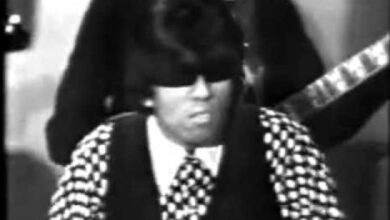Some consider this among the most iconic TV ads ever. Those who lived through 1971 probably know every lyric
The Coca-Cola “Hilltop” commercial’s enduring impact is rooted in its simple yet powerful message of unity and global harmony, expressed through the idea of sharing a Coke. The ad captured a moment in time during the 1970s, a period characterized by social and political upheaval. By featuring people from diverse backgrounds standing together and singing on a hilltop, the ad became a visual metaphor for world peace and connection. Bill Backer, who conceptualized the ad, sought to leverage Coca-Cola as a symbol of joy and togetherness, transcending cultural differences and emphasizing a shared human experience.
The production of the commercial faced numerous challenges. Originally planned to be shot on the Cliffs of Dover, bad weather forced the crew to relocate to a hilltop outside Rome. Casting also presented difficulties, as the commercial required a multicultural group to represent various ethnicities authentically. Eventually, Italian actors and models were selected to reflect the desired diversity, and the shoot involved over 60 people. The scene of participants holding Coca-Cola bottles formed a heart-shaped pattern, captured serendipitously when the camera panned from above.
The song, “I’d Like to Teach the World to Sing,” initially emerged as a radio jingle before being expanded into a full song due to its immense popularity. Songwriters Roger Cook, Roger Greenaway, Bill Backer, and Billy Davis crafted the melody and lyrics, which were designed to communicate a message of peace and unity, resonating with listeners worldwide. The jingle’s success led to its transformation into a commercial, with The New Seekers recording the radio version and The Hillside Singers appearing in the TV ad. Both versions achieved significant chart success, with the song’s lyrics invoking imagery of a harmonious world where differences were set aside.
The ad’s reception was multifaceted, initially sparking mixed reviews. Some critics praised its uplifting message, while others dismissed it as overly sentimental or unrealistic. However, the overwhelming public response demonstrated a longing for connection during a turbulent era. The ad generated a surge of consumer interest in Coca-Cola, leading to increased sales and solidifying the brand’s image as a purveyor of happiness. Its ability to resonate with audiences from various backgrounds made it a landmark in advertising.
In the years following its release, the “Hilltop” ad has continued to be referenced in popular culture, influencing a variety of media and inspiring numerous parodies and homages. Coca-Cola revisited the concept with campaigns in subsequent decades, including a 1990 reunion featuring some original cast members and a digital update in 2012. These efforts served not only to celebrate the original commercial but also to adapt its core message of unity to contemporary audiences.
The cultural significance of the “Hilltop” commercial extends beyond advertising; it represents a time when brands began to embrace broader social themes in their messaging. The idea of using a product to promote global togetherness was a groundbreaking concept that set a precedent for future marketing strategies. This shift indicated a growing awareness among consumers and brands alike of the power of collective identity in a globalized world.
The artists involved in the creation of the song have also enjoyed recognition for their contributions. The New Seekers, who recorded the popular version of the song, were a British vocal group that gained prominence during the 1970s. They became known for their harmonious sound and ability to convey meaningful messages through music. Their success with “I’d Like to Teach the World to Sing” marked a pivotal moment in their career, as the song became synonymous with the Coca-Cola brand and a touchstone in the music industry.
Ultimately, the “Hilltop” commercial remains a testament to the potential of advertising to transcend mere product promotion. It exemplifies how a brand can connect with consumers on a deeper emotional level by addressing universal themes of love, peace, and community. The legacy of the ad continues to inspire new generations of marketers, reminding them of the power of storytelling in advertising and the enduring appeal of a message that resonates with the human experience.



